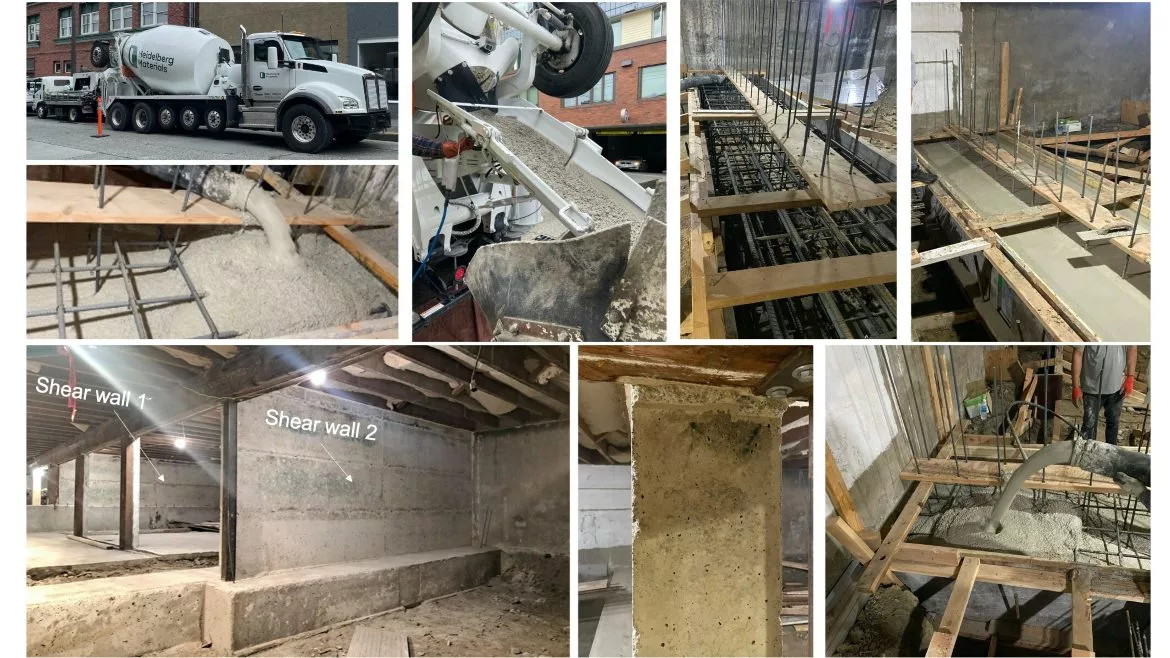C-Crete Technologies Gets Inaugural Concrete Pour in Seattle Building

Images courtesy of C-Crete Technologies
C-Crete Technologies has unveiled its cement-free concrete with its debut pour in a commercial building in Seattle. The alternative to Portland cement reportedly produces almost no carbon dioxide in its manufacturing and absorbs CO2 from the air over time.
Portland cement is responsible for around 7% of total CO2 emissions worldwide. If used instead, the new material can help reduce the environmental impact of the construction industry. Each ton of C-Crete binder that replaces Portland cement prevents approximately 1 ton of CO2 emissions. The product utilizes a suite of natural minerals and industrial byproducts.
Approximately 60 tons of the cement-free concrete were poured in the foundations and shear walls of the Seattle project at 7200 Woodlawn, an adaptive reuse development of a 120-year-old historic brick building that used concrete as part of a seismic retrofit.
The concrete had reportedly achieved a loading strength of more than 5,000 pounds per square inch, greater than the ASTM standard of about 4,000 psi for most residential, commercial and infrastructure concrete applications. It also meets other industry standards, resists freeze-thaw cycles, alkali-silica reactions and chloride and acid penetrations—and is compatible with conventional concrete admixtures, allowing for integration into existing construction practices.
"We are thrilled to introduce our cement-free concrete, a game-changer in sustainable construction," says C-Crete's founder and president, Rouzbeh Savary, Ph.D. "Our binder is a drop-in replacement for Portland cement that drastically reduces carbon emissions. Given that our product meets industry standards and has cost-parity with conventional concrete, it opens up an entirely new era in construction."
C-Crete used Heidelberg Materials, a building materials and ready-mix concrete company, to deliver the cement-free concrete for this project.
Donald Davies is owner of the Seattle building and chair of Building Transparency, a nonprofit dedicated to enabling the building industry to address embodied carbon's role in climate change. "As a developer, a structural engineer of 33 years, and a leader in low-carbon construction, I'm seeing many lower-carbon concretes being discussed," Davies says. "I'm seeing exciting advancements, but few are ready to scale into production the way C-Crete can now. No-cement, and low-carbon concrete isn't just a pipe dream. It is real, it is now, and it works. This project proves it's possible, today."
Looking for a reprint of this article?
From high-res PDFs to custom plaques, order your copy today!






